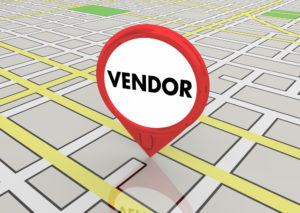
This guest post from Matt Falls is part of his comprehensive five-part guide called “Build Relationships That Create Revenue,” available at http://matthewfalls.com/build-relationships-create-revenue/ and was adapted and republished with permission.
(Matt has been featured on this site before, representing the BusinessUSA.gov website.)
There’s an event next week. Perhaps it’s an Industry Day, a program office is giving a seminar, there’s a networking event sponsored by a trade association or economic development agency, or perhaps you’ve identified a key contact and you want to set up a meeting. Maybe you are attending a trade show or industry event.
Do some research. Who is sponsoring? What programs or panel discussions are being offered? Can you contribute? Call the organization and ask how you can help with the event. Your research on the organization can tell you what programs they like to offer, and what its membership does. Becoming a resource to them gives the organization the confidence to introduce you to an opportunity.
Focus on your goals for this event. Do you want leads, an introduction to someone, or just to build your brand? You’re not going to close a sale, so relax. You can take the time to nurture a relationship. Set performance metrics, e.g., I expect to have x substantial conversations that lead to an opportunity, or I expect to collect x business cards. Setting metrics allows you to objectively evaluate your performance and the usefulness of the event. Evaluating each event provides the information needed to make the most of your time, to focus on those events and organizations that provide the most value for you.
A SWOT analysis of your strengths, weaknesses, opportunities and threats will give you the information and strategic focus needed to craft a statement about your organization, what it does best and why the listener should care. People will want to know what you or your organization does and you need to have a clear vision that ties into your goals for this event.
When you meet that first person, pay attention to them. Look them in the eye, shake hands firmly and show an interest in their business card and what their position is in the organization. Figure out what concerns this person; have a genuine interest in what they are doing. Ask about recent press releases, new initiatives they may be engaged in, talk about what they hope to get out of this event.
Make the focus on them. Don’t forget the human element of relationships. It is very important to understand what is possible and what the person that you are speaking with is capable of doing; if not, you’re wasting your time. The more you focus on the other person, the faster you will have the information to make a determination about this person.
The other person will ask about your business. Because you spent the time focusing on the other person in this conversation, you now have the information needed to craft your response around how your company’s product or service can be a benefit to the company. Talk about next steps. Leave the conversation with an action item. Write it on the back of their business card when you get a chance. Tell them that you will respond to them the next day.
If you get so lucky as to uncover a potential need and opportunity, try to learn who will influence the solution and the decision-making process. Visit each of those buying influence’s LinkedIn profiles and pay close attention to whether they are linked to any of your competitors. If so, then that’s a red flag.
Sometimes there really is no connection to the person; you cannot provide what they need. Ask for a referral. Do they know anyone who has a need for your product or service? If so, ask for a specific email introduction to their contact referencing the point of interest as an action item for this conversation. Write the contact’s name and point of interest on the back of the business card.
The event is over and you have a handful of business cards. Hopefully you wrote the action items on the back of the cards. Review the event. How did you perform against your goals? Be objective about the event. Was the event not a good fit and could more research have told you that? Did you spend too long with one person and you didn’t make enough other contacts? Keeping performance metrics allows to objectively evaluate the event, your preparation and your pitch.
Add the cards, points of interest and action items into your contact database and assign tasks for follow up. Always follow up when you say you will. It goes to your credibility, reliability and reputation for being able to deliver. These are some of the most important aspects in a good relationship and to gain the confidence of people who might be able to help you in the future.
At this point it’s time to cultivate these relationships, bring value to your contacts, assuring that they see you and your company as a valuable resource in their network.
Matthew Falls helps emerging companies that need a seasoned executive to fill out their senior team. He focuses on driving organic revenue, tapping the expertise of employees to reduce costs, creating innovation teams that transform ideas into highly profitable products, inspiring teams to win more business and creating internal controls and cost systems that sustain profitability. You can email Matthew to learn more.



